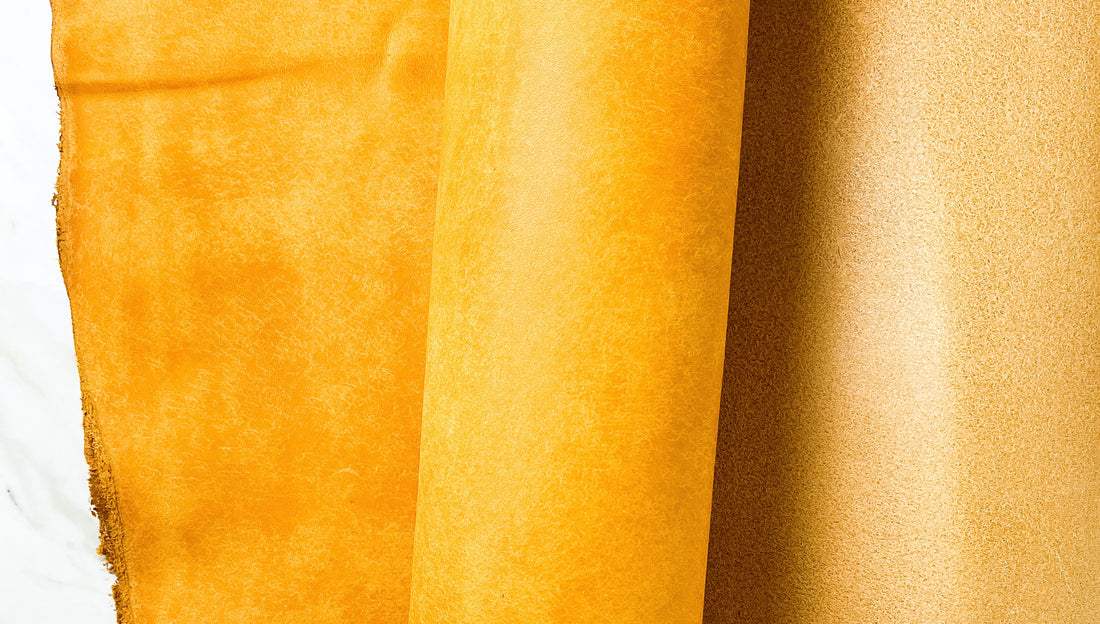When it comes to leather crafting, choosing the right type of leather is crucial for the quality and durability of the final product. One popular option among leather crafters is vegetable tanned leather. In this article, we'll dive into what vegetable tanned leather is, where it's produced, how it's made, why it's so high quality, and why it's the preferred type of leather among leather crafters. We'll also discuss some of the disadvantages of this type of leather.
What is Vegetable Tanned Leather?
Vegetable tanning is a traditional method of producing leather that has been used for centuries. This process involves using natural tannins found in tree bark, such as oak or chestnut, to transform raw animal hides into a durable, long-lasting leather.
Vegetable tanning is a slow and meticulous process that requires skilled craftsmen to carefully monitor and control the tanning process. This results in a high-quality leather that is strong, flexible, and has a natural patina that develops over time.
Where is Vegetable Tanned Leather Produced?
Vegetable tanned leather is produced all over the world, but the majority of the world's production comes from Italy, specifically from the Tuscany region. Tuscany has a long history of producing high-quality leather, and the region is known for its skilled craftsmen who use traditional techniques to create some of the world's finest leather goods.
How is Vegetable Tanned Leather Produced?
The process of producing vegetable tanned leather involves several steps, including:
-
Soaking: The hides are soaked in water to remove any dirt or debris.
-
Liming: The hides are then soaked in a lime solution to remove any hair or flesh that remains on the hide.
-
Deliming and Bating: The hides are then soaked in a solution to neutralize the lime and prepare the hides for tanning.
-
Tanning: The hides are immersed in a solution of natural tannins extracted from tree bark. The hides are then left to soak in the solution for several weeks to allow the tannins to penetrate the hide and transform it into leather.
-
Conditioning: Once the tanning process is complete, the leather is conditioned with natural oils and fats to make it supple and soft.
-
Finishing: The leather is then finished with dyes or pigments to add color and protect the surface.
Why is Vegetable Tanned Leather Preferred by Leather Crafters?
There are several reasons why vegetable tanned leather is preferred by leather crafters:
-
High Quality: Vegetable tanned leather is of a high quality and is known for its durability, strength, and natural appearance.
-
Sustainability: Vegetable tanning is a natural process that does not rely on chemicals or synthetic tanning agents, making it a sustainable and eco-friendly choice.
-
Customization: Vegetable tanned leather can be easily customized and tooled, making it a popular choice for leather crafters who want to create unique and personalized leather goods.
-
Aging: Vegetable tanned leather develops a unique patina over time, giving it a character and charm that synthetic leathers cannot replicate.
Disadvantages of Vegetable Tanned Leather
While vegetable tanned leather has many benefits, it also has some disadvantages:
-
Cost: Vegetable tanned leather is more expensive than other types of leather due to the slow and meticulous tanning process.
-
Stiffness: Vegetable tanned leather can be stiff and difficult to work with, especially when compared to other types of leather that have been treated with synthetic tanning agents.
-
Water Resistance: Vegetable tanned leather is not as water-resistant as other types of leather, making it less suitable for outdoor use or in wet environments.
Conclusion
In conclusion, vegetable tanned leather is a high-quality, sustainable, and customizable option for leather crafters who want to create unique and long-lasting leather goods. While it does have some disadvantages, its benefits far outweigh the drawbacks. As a leather crafter in Canada or the United States, consider using vegetable tanned leather for your next project and experience the beauty and durability of this traditional tanning method.
